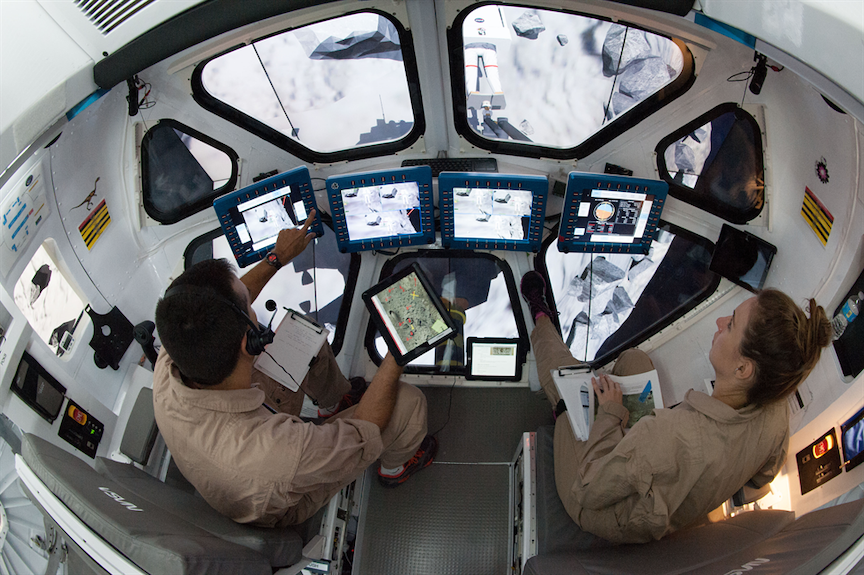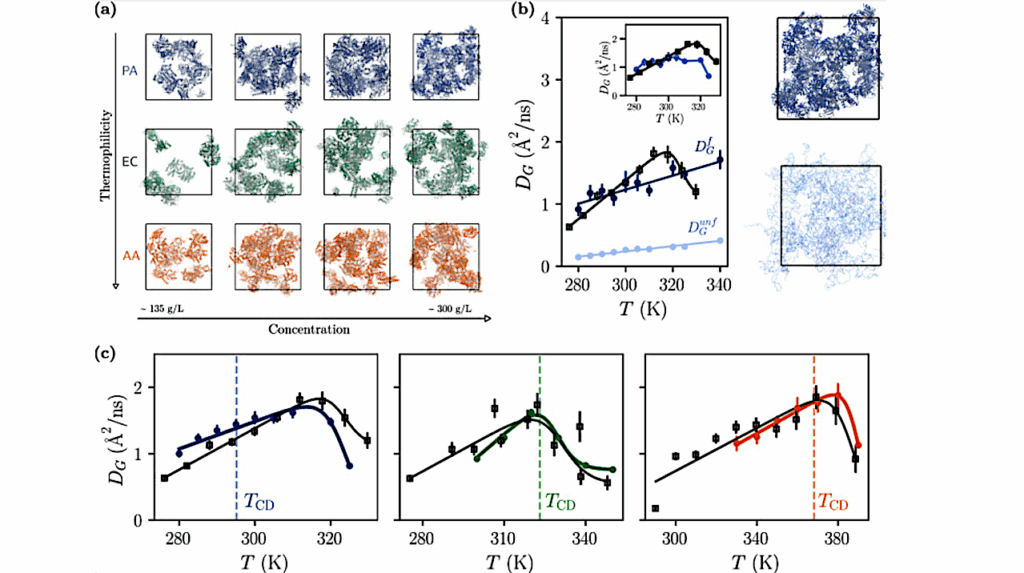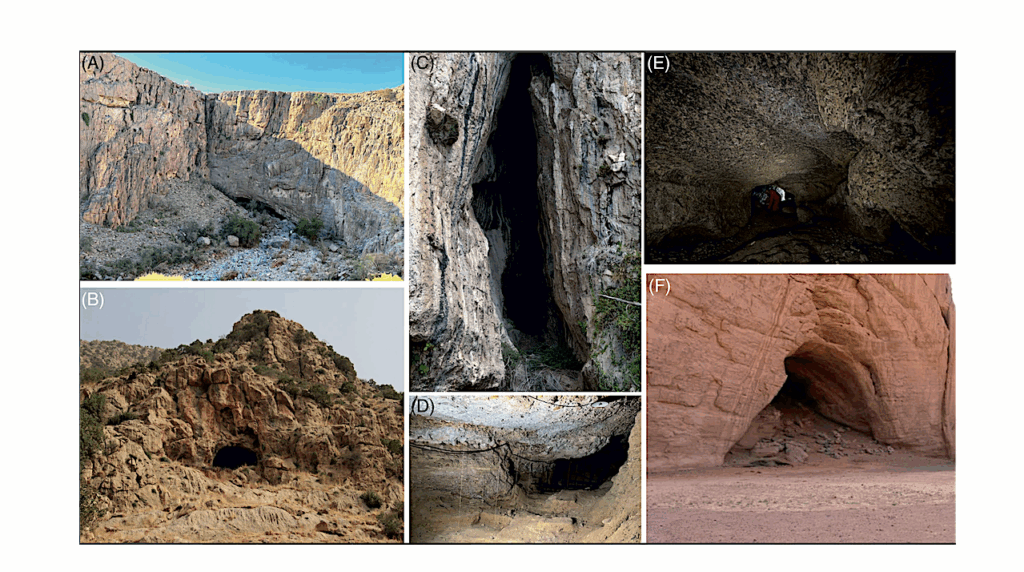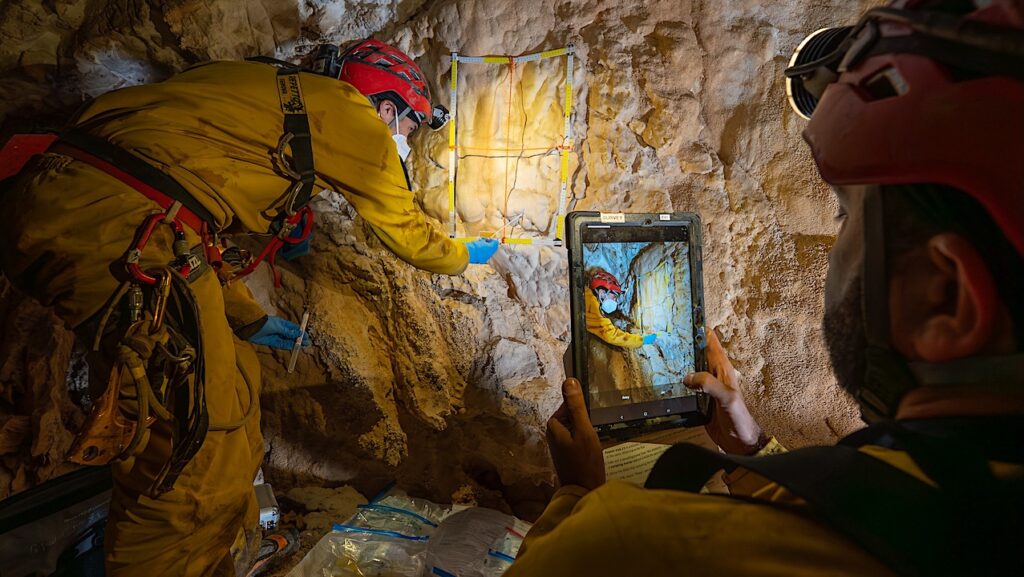Astrobiology Away Team Training: For The Love Of Martian Soil

For Elizabeth Rampe, a planetary geologist in NASA Johnson Space Center’s Astromaterials Research and Exploration Science (ARES) division, science isn’t just a passion—it could very well be in her DNA.
With a biologist father and archeologist mother, Rampe seems destined to uncover the secrets hiding within Martian geology and mineralogy that may one day help astronauts navigate the perils of the Red Planet.
As part of the ARES team, Rampe is among the scientists who work to understand and decipher the properties of Martian surface materials, which inform us about past and present conditions on Mars.
But before Mars appeared on her horizon, Rampe thought she would pursue a career as a paleontologist. Born and raised in Denver, she grew up hiking and camping outdoors with her family and loved everything about the natural world—especially dinosaurs.
“I think my mom is to blame for this, but as long as I can remember, I was just so totally in love with dinosaurs, so I have dinosaur everything,” Rampe said.
Even while attending Colgate University in upstate New York, Rampe was able to combine her love of dinosaurs and geology.
“I thought I wanted to go into chemistry, and took some chemistry classes and liked them, but there was a class on dinosaur evolution my freshman year,” Rampe said. “I took that and I was like … sold!”

Rampe hikes into a field analog for early Mars in Three Sisters, Oregon. Credits: NASA
Rampe’s sophomore year at Colgate University marked a turning point in her education. She started doing research for one of her geology professors, who was studying clay minerals in the Adirondack Mountains.
Clay minerals are tiny minerals that form from water-rock interactions, called chemical weathering. Water interacts with minerals and dissolves elements, then new minerals precipitate. These new minerals have the ability to tell geologists the past conditions of water, like the amount, temperature and composition.
During her junior year of undergraduate school, Rampe received the opportunity to study abroad in Wollongong, just south of Sydney, Australia, to learn more about clay mineralogy from lava that had surged into the ocean.
When it came time to pursue her doctorate, Rampe found herself at a crossroads. She would either study paleontology at the University of California, Santa Barbara, or attend Arizona State University and study clay mineralogy on Mars.
“I was like, OK, I love clays, but I also love dinosaurs,” Rampe said. “I know nothing about Mars. I know that it’s red and it’s the fourth planet from the sun.”
But even T-Rex’s stubby arms couldn’t hold Rampe back from taking what, for her, was a giant leap into the unknown.
Today, Rampe studies Martian geology, researching minerals that form from water-rock interactions in an effort to unveil the history of this elusive planet. The surface of Mars whispers of its past. Evidence of ancient river channels and deltas show it was Earth-like about 3.5 to 4 billion years ago and home to plenty of water.
So how exactly does one learn about the mineralogy of Mars from Earth? With Curiosity, of course—the human kind and the rover kind. ARES supports the daily operation of rovers on Mars to gain the data that will increase our understanding of the planet. Curiosity is equipped with 10 instruments to study the past and present environments of Mars.
Rampe is both the deputy principal investigator and the instrument operations lead for the Chemistry and Mineralogy (CheMin) instrument on Curiosity. Curiosity drills into rocks and delivers the powdered sample into CheMin, which then shoots a beam of X-rays directly at the powder, revealing the crystalline structure in the grains of the samples. The data is then relayed down to Earth through the Mars Reconnaissance Orbiter and Odyssey spacecraft for further analysis.
Another amazing instrument aboard Curiosity is the Sample Analysis at Mars (SAM), which analyzes the gases that come off a sample as it’s heated to 800 degrees Celsius. With SAM, scientists can study the water released from the samples and then help verify what type of clay mineral it is.
“They do see some organic materials in some of these samples, and organics are the building blocks of life,” Rampe said. “That’s why we’re studying Mars. We want to know was there ever life on Mars. Is there life on Mars?”
Although Curiosity is operated out of the Jet Propulsion Laboratory (JPL) in California, Rampe and the ARES science team help plan Curiosity’s day-to-day operations and science objectives in coordination with JPL engineers.
With the ARES science team slated as part of the future rover mission, Mars 2020, Rampe knows that their findings will help support human missions to other worlds.
“One goal is to try to find places for humans to investigate,” Rampe said. “By studying hydrated minerals, you can try to inform people where to go based on resources [and also] characterize the minerals that we commonly find on Mars, so that when we get there, it’s not a surprise.”
Rampe has never doubted that she belongs in ARES. But for young girls and boys who may feel out of their element with science, technology, engineering and math subjects, she has some encouraging words.
“No matter what you do to be successful, you’ve got to put in some hard work,” Rampe said. “I learned to rely on other people, or ask other people for help. That’s really how science works. I’m not figuring out Mars all by myself. Don’t be upset by those things that are difficult. Get through those things, but then really focus on those things that you love doing and you kick [butt] at doing.”
To learn more about the Astromaterials Research and Exploration Science Division, visit: http://www.nasa.gov/centers/johnson/astromaterials
Astrobiology








